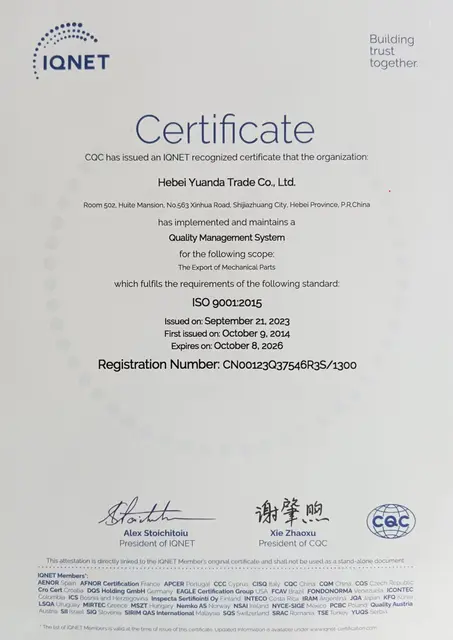Mobile:+86-311-808-126-83
Email:info@ydcastings.com
die casting methods
Die Casting Methods An Overview
Die casting is a manufacturing process that involves forcing molten metal into a mold cavity under high pressure. This technique is widely used for producing intricate shapes and components with high precision and excellent surface finishes. The primary materials used in die casting include aluminum, zinc, magnesium, and copper alloys. The process is favored in various industries, including automotive, aerospace, electronics, and consumer goods, due to its efficiency and the high quality of parts produced.
There are two main types of die casting methods hot chamber die casting and cold chamber die casting. Each method has its unique features, advantages, and applications.
Hot Chamber Die Casting
Hot chamber die casting, also known as gooseneck die casting, is typically used for metals with low melting points, such as zinc, lead, and magnesium. In this process, the melting furnace is directly connected to the injection system. The molten metal is injected into the mold as soon as it is melted, which allows for faster production cycles.
One of the primary advantages of hot chamber die casting is its efficiency and speed. The continuous availability of molten metal means that cycle times can be significantly reduced, leading to higher output rates. However, this method is limited to metals with low melting points as high-temperature metals can damage the injection mechanism. Despite this limitation, hot chamber die casting is widely used in applications like automotive components, electrical housings, and consumer products due to its cost-effectiveness and simplicity.
die casting methods

Cold Chamber Die Casting
Cold chamber die casting is utilized for metals with higher melting points, such as aluminum and copper. In this method, the molten metal is poured into a separate chamber before it is injected into the mold. This separation is necessary to prevent damage to the injection mechanism and allows for the use of metals that require higher temperatures to melt.
While cold chamber die casting has a longer cycle time compared to hot chamber die casting, it allows for more flexibility in material selection and is suitable for a broader range of alloys. The process typically involves pouring molten metal into a chamber, where a plunger forces it into the mold cavity at high pressure. This method is particularly advantageous for producing components that require excellent mechanical properties and dimensional accuracy, making it ideal for applications in the aerospace and automotive industries.
Conclusion
Both hot chamber and cold chamber die casting methods have their distinct advantages and applications, allowing for the efficient production of high-quality metal components. As technology advances, die casting processes continue to evolve, incorporating innovations that enhance precision, reduce waste, and improve energy efficiency. With the increasing demand for lightweight and strong components in modern manufacturing, die casting will play a crucial role in meeting these challenges. Whether in the production of intricate parts for electronics or robust components for vehicles, die casting methods are essential in driving progress across various industries, ensuring that manufacturers can deliver quality parts that meet the demands of today's market.
-
Why Is Choosing the Right Motor Housing Critical for Engine Performance?NewsJul.18,2025
-
Which Impeller Types Best Optimize Your Pump’s Efficiency?NewsJul.18,2025
-
Optimize Maintenance Efficiency with Durable Oil Catch SolutionsNewsJul.18,2025
-
Maximize Pump Performance with Precision-Engineered ComponentsNewsJul.18,2025
-
Elevate Industrial Flow Systems with Precision-Engineered ComponentsNewsJul.18,2025
-
Boost Durability and Functionality with Precision Power CastingsNewsJul.18,2025











